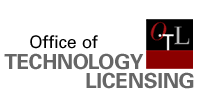BCATS 2008 News
Abstract submissions are now closed. See you on October 25th!
This year's symposium will take place on October 25, 2008.
Keynote Addresses
Prof. Andy McCammon, Ph.D.
Joseph E. Mayer Professor of Theoretical Chemistry
Distinguished Professor of Pharmacology
UCSD
Nasty Beasties: Computer-aided Drug Discovery for Infectious Diseases (abstract)
Rowan Chapman, Ph.D
Mohr Davidow Ventures
Investing in Personalized Medicine (abstract)
Ron Kikinis, MD
Founding Director of the Surgical Planning Laboratory,
Department of Radiology, Brigham and Women's Hospital
Harvard Medical School
Medical Image Computing: From Data to Understanding (abstract)
BCATS Symposium
Now in its ninth year, the Biomedical Computation at Stanford symposium provides an open, interdisciplinary forum for Stanford
students and post-docs to share their latest work in computational biology and medicine with others from Stanford and beyond.
BCATS was originally organized to bring together and integrate the diverse work done across Stanford in all fields related
to biomedical computation; after eight years, BCATS has become an important part of the Stanford biomedical computation community.
Volunteer for BCATS
BCATS is looking for volunteers to help on the day of the conference (Oct 25)
or the day before (Oct 24). Registration is free
for BCATS volunteers.
Topics
BCATS welcomes presentations from all domains of computerized and computer-aided biology
and medicine, broadly conceived. Topics will include:
- Bioinformatics, Biostatistics and Computational Biology
- Computational Genomics and Systems Biology
- Biomechanical Simulation, Modeling and Robotics
- Medical Informatics
- Structural Biology and Chemistry
- Biomedical Imaging
Keynote Address Abstracts
Rowan Chapman, Ph.D
Mohr Davidow Ventures
Investing in Personalized Medicine
The molecular diagnostics industry is being driven by the availability of sensitive, high-throughput detection methodologies for genome-wide analysis of DNA, RNA, protein and metabolites. This presentation will focus on how investment firms such as MDV make investments in tools and molecular diagnostics that drive personalized medicine. Examples from portfolio companies such as Pacific Biosciences and Raindance Technologies will be discussed.
Prof. Andy McCammon, Ph.D.
Joseph E. Mayer Professor of Theoretical Chemistry
Distinguished Professor of Pharmacology
UCSD
Nasty Beasties: Computer-aided Drug Discovery for Infectious Diseases
The selective character of the binding and reactivity of key
biological molecules is essential for life. Properly understood,
such selectivity can be exploited in the design of drugs, novel
antibodies or enzymes, sensors, or a host of other materials or
devices. This talk will provide a brief overview of how computer
simulations are now enabling the discovery of new drugs for the
treatment of infectious diseases. Particular emphasis will be placed on
proper accounting of the flexibility of the receptor in the design
of such drugs. The potential of new generations of computing
hardware and methodology to dramatically transform this area of
work will be emphasized. Images and animations related to this work can be found
here.
Ron Kikinis, MD
Founding Director of the Surgical Planning Laboratory,
Department of Radiology, Brigham and Women's Hospital
Harvard Medical School
Medical Image Computing: From Data to Understanding
The development of new technologies that acquire large amounts of complex data is accelerating throughout medicine. Corresponding breakthroughs in accessible computation and algorithm development have made image analysis an indispensable tool for medical research and clinical practice. For example, image analysis enables the data acquired using diffusion tensor imaging (DTI) and functional magnetic resonance (fMRI) to reveal subject-specific structure and function of the brain.
The emerging field of medical image computing requires strong, interdisciplinary teams of researchers, physicians, and engineers. Building such teams is a challenging but ultimately rewarding process. The Surgical Planning Lab at Brigham and Women's Hospital was founded in 1990 to enable research in image computation within the hospital context. Today, the SPL is the hub of the National Alliance for Medical Image Computing, a national effort with international impact across biomedicine and, increasingly, other fields of science. NAMIC drives scientific and engineering innovation through interdisciplinary collaboration, application-driven development, a well-designed hardware and software infrastructure, and an open-source approach to dissemination and community-building.
This presentation will describe how research ideas evolve into useful medical and scientific tools within the SPL and NAMIC environments.










